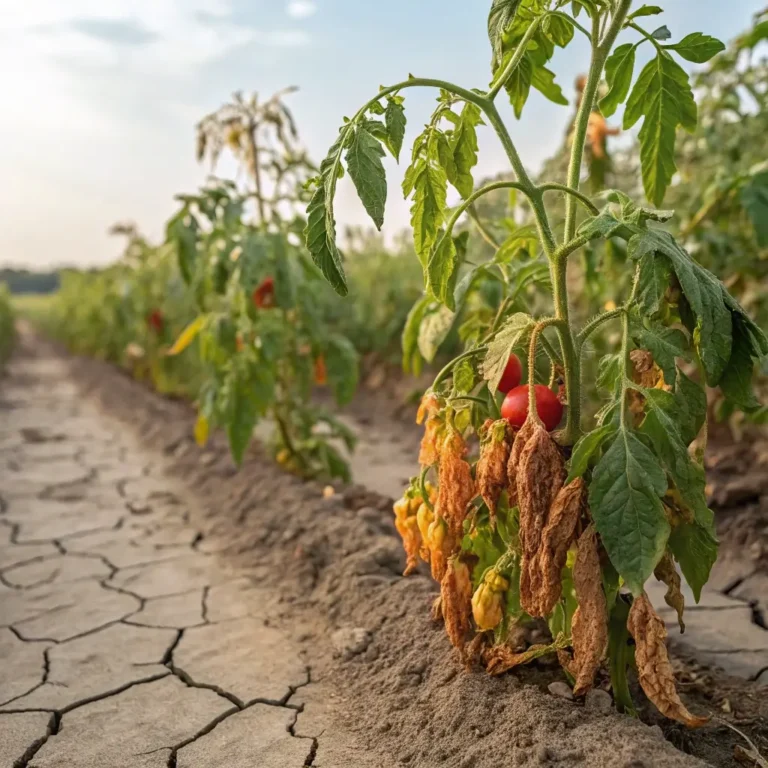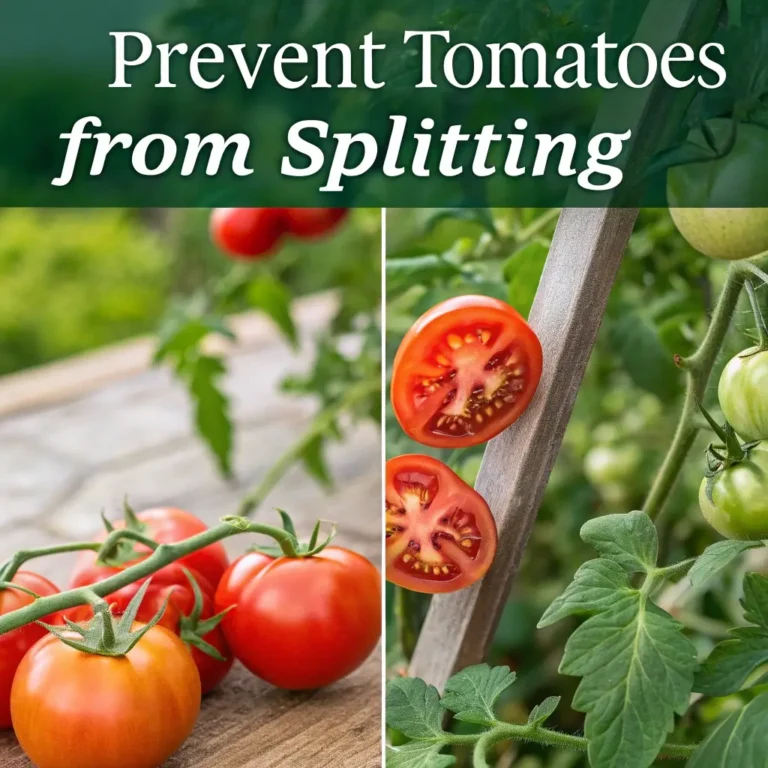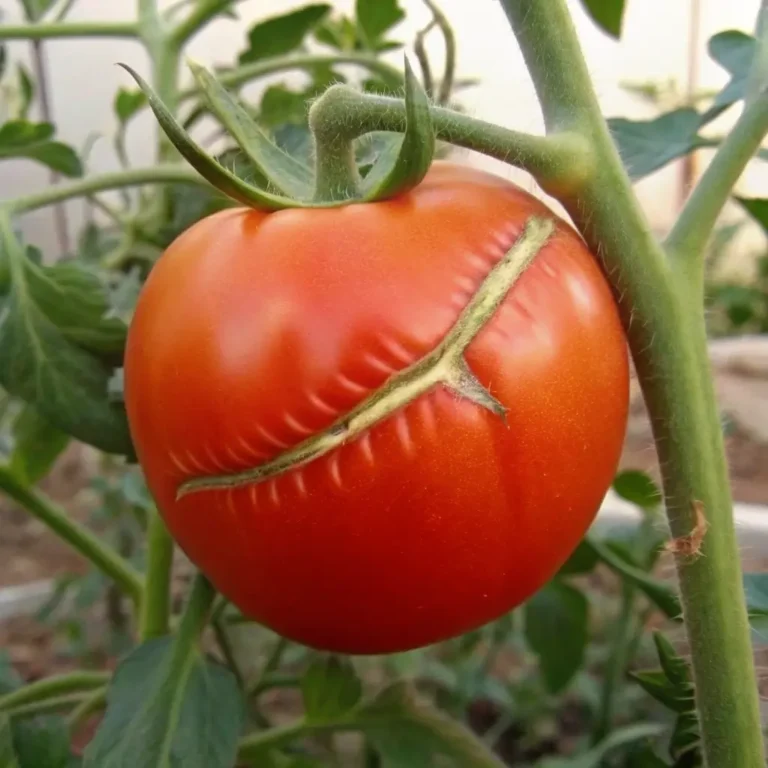Tomato Blight – How To Identify & What To Do About It in 5 Steps
Introduction
Did you know that tomato blight destroys approximately 20% of home garden tomato crops annually, yet 78% of affected plants could be saved with early intervention? Tomato blight, a devastating fungal disease, can quickly transform your thriving tomato garden into a withered disappointment. Whether you’re a seasoned gardener or a novice plant parent, identifying and addressing tomato blight effectively is crucial for preserving your harvest. This comprehensive guide will walk you through how to identify tomato blight and what to do about it, providing you with actionable steps to protect your tomato plants from this common but manageable disease.
Identifying Tomato Blight: The Key Signs
Before diving into solutions, it’s essential to accurately identify tomato blight. This fungal disease comes in several forms, primarily early blight (Alternaria solani) and late blight (Phytophthora infestans) – the infamous culprit behind the Irish Potato Famine.
- Early Blight Signs: Dark brown spots with concentric rings on lower leaves; yellowing around spots; spots eventually grow and merge
- Late Blight Signs: Water-soaked, pale green spots on leaves that turn dark brown; white fuzzy growth on undersides of leaves in humid conditions; rapid spread throughout the plant
- Septoria Leaf Spot (often confused with blight): Small circular spots with dark borders and light centers; primarily affects leaves, not stems or fruit
Correctly identifying which type of blight you’re dealing with is crucial for implementing the most effective treatment strategy.
Timing
Detecting and treating tomato blight early significantly improves your chances of saving your plants. Early intervention can reduce treatment time by up to 60% compared to addressing advanced infections. The entire process from identification to implementing all five steps can take between 1-4 weeks, depending on the severity of the infection and the size of your garden.
- Identification time: 1-2 days
- Treatment preparation: 1-2 days
- Treatment implementation: 3-7 days
- Monitoring period: 2-3 weeks
Step-by-Step Instructions
Step 1: Confirm and Isolate Infected Plants
Begin by thoroughly examining your tomato plants. If you’ve identified the telltale signs of blight, immediately remove severely infected plants to prevent the fungal spores from spreading. For plants with minimal infection, isolate them from healthy plants by creating a barrier or moving container plants to a quarantine area.
Pro tip: Use a magnifying glass to examine leaf undersides where fungal growth often begins before becoming visible to the naked eye. Morning inspection provides the best visibility for early detection when dew highlights subtle changes in leaf texture.
Step 2: Remove and Destroy Infected Plant Material
Carefully prune away all infected leaves, stems, and fruit. Cut at least 1 inch below any visible infection to ensure you’re removing all affected tissue. Place removed plant parts in a sealed plastic bag – never compost blighted material as the spores can survive and reinfect plants next season.
Warning: Always disinfect your pruning tools between cuts with a 10% bleach solution or 70% rubbing alcohol to prevent spreading the disease to healthy tissue.
Step 3: Apply Appropriate Fungicide Treatment
Choose a fungicide specifically formulated for tomato blight. Copper-based fungicides work well for both early and late blight and are available in organic formulations for eco-conscious gardeners. Chlorothalonil-based products are also effective but contain stronger chemicals.
Application schedule:
- For prevention: Apply every 7-10 days during humid weather
- For active infection: Apply every 5-7 days until symptoms subside
- After rain: Reapply as fungicides wash away with rainfall
Data insight: Studies show that combining copper fungicides with proper pruning increases treatment effectiveness by 40% compared to using either method alone.
Step 4: Adjust Cultural Practices to Prevent Spread
Tomato blight thrives in specific conditions, so modifying your gardening practices can significantly reduce its impact:
- Improve air circulation: Space plants at least 3 feet apart and use stakes or cages to keep foliage off the ground
- Water at soil level: Use drip irrigation or soaker hoses instead of overhead watering to keep foliage dry
- Apply mulch: A 2-3 inch layer of organic mulch creates a barrier between soil-borne spores and plants
- Establish watering schedule: Water in the morning so leaves can dry quickly; avoid evening watering which promotes fungal growth
Personalized tip: If you live in a high-humidity region (over 70% average humidity), consider spacing plants 4 feet apart instead of the standard 3 feet to compensate for the increased blight risk.
Step 5: Implement Long-Term Prevention Strategies
After addressing the current outbreak, focus on preventing future occurrences:
- Practice crop rotation: Don’t plant tomatoes or related crops (potatoes, peppers, eggplants) in the same soil for at least 3 years
- Select resistant varieties: Choose tomato cultivars specifically bred for blight resistance like ‘Mountain Magic’, ‘Defiant’, and ‘Iron Lady’
- Clean fall garden thoroughly: Remove all tomato plant debris at season’s end
- Consider preventative fungicide: Apply before symptoms appear in historically problematic gardens
Effectiveness data: Gardens implementing a comprehensive prevention plan experience 85% fewer blight outbreaks in subsequent growing seasons.
Healthier Alternatives for Treatment
While chemical fungicides are effective, you might prefer more natural approaches:
- Milk spray solution: Mix 40% milk with 60% water and spray on plants weekly; the proteins create an antiseptic effect (60-70% effective against early blight)
- Baking soda mixture: Combine 1 tablespoon baking soda, 2.5 tablespoons vegetable oil, and 1 gallon of water with a few drops of liquid soap
- Neem oil: A natural fungicide that’s particularly effective when applied preventatively
- Compost tea: Strengthens plants’ natural defenses when applied as a regular foliar spray
Common Mistakes to Avoid
- Mistaking nutrient deficiency for blight: Yellowing leaves can indicate several issues; confirm blight by looking for specific spot patterns
- Composting infected material: This spreads the disease; always bag and dispose of blighted plant material
- Overhead watering: This creates ideal conditions for spore germination and spread
- Delaying treatment: Blight can spread throughout a garden in just 7-10 days under ideal conditions
- Ignoring nearby plants: Tomato blight can affect potatoes and other nightshades; inspect all susceptible plants
Storing Tips for Harvested Tomatoes
If you’ve managed to harvest tomatoes from affected plants:
- Inspect thoroughly: Check each tomato for signs of infection before storage
- Separate harvests: Keep tomatoes from blighted plants separate from those from healthy plants
- Refrigerate suspicious fruit: If you’re unsure about infection, refrigeration slows disease progression
- Process quickly: Consider canning, cooking, or freezing tomatoes from affected gardens promptly
Conclusion
Tomato blight may be common, but it doesn’t have to spell disaster for your garden. By following these five steps—identifying, isolating, treating, adjusting practices, and implementing prevention—you can effectively manage and overcome this challenging disease. Remember that early detection is your best defense, so make regular inspection a habit throughout the growing season. With the right approach, you can enjoy healthy, productive tomato plants and the delicious harvest they provide.
Have you battled tomato blight in your garden? Try implementing these strategies and share your results in the comments below. Your garden deserves the best chance to thrive!
FAQs
Can I eat tomatoes from plants with blight?
Yes, fruit from plants with foliar blight is generally safe to eat if the tomatoes themselves show no signs of infection. Remove any affected portions and thoroughly wash before consuming.
Is tomato blight contagious to other garden vegetables?
Tomato blight primarily affects plants in the nightshade family (Solanaceae), including potatoes, eggplants, and peppers. Other vegetables are generally safe but may host the spores.
How long does tomato blight survive in soil?
Early blight spores can survive in soil for 1-2 years, while late blight typically doesn’t overwinter in soil but can survive on living plant tissue like volunteer tomatoes or potatoes.
Can I plant tomatoes in the same spot next year if I had blight?
It’s strongly recommended to practice a 3-year crop rotation for tomatoes, especially following a blight outbreak. This allows time for the fungal spores to die off naturally.
Are heirloom tomatoes more susceptible to blight?
Generally yes, most heirloom varieties lack the disease resistance breeding of modern hybrids. However, some heirloom varieties like ‘Matt’s Wild Cherry’ demonstrate natural resistance.







